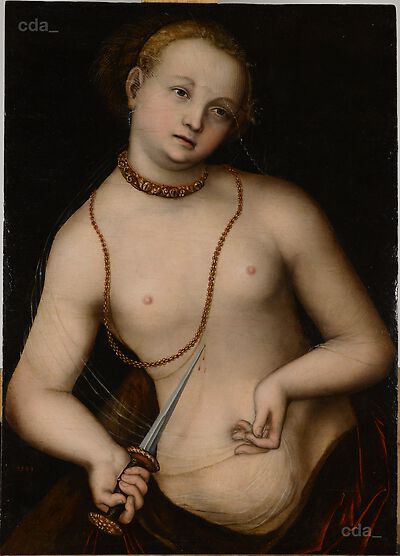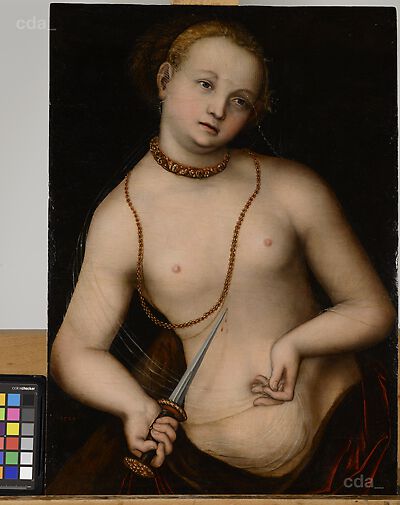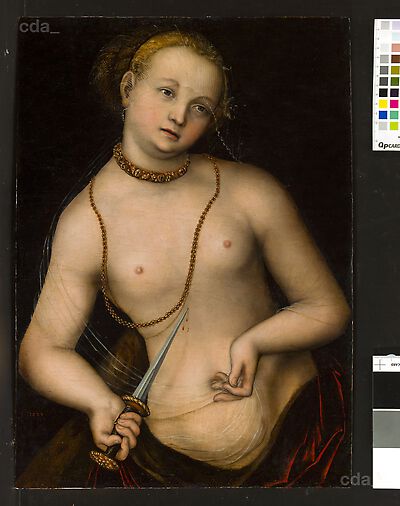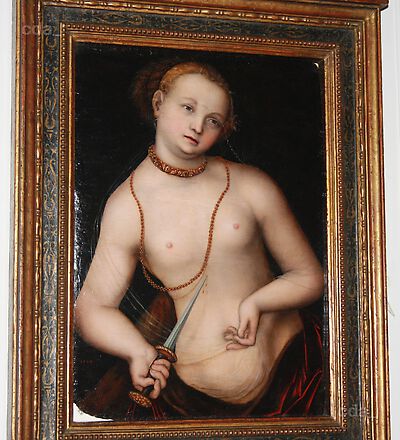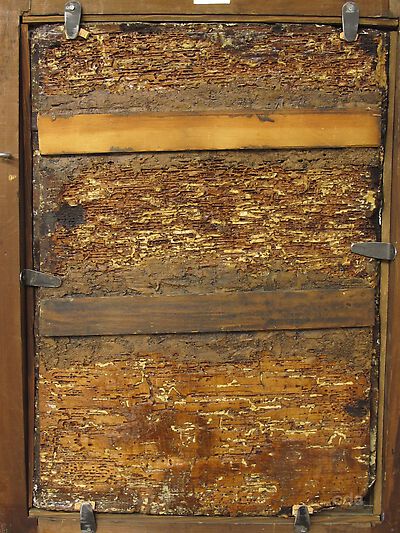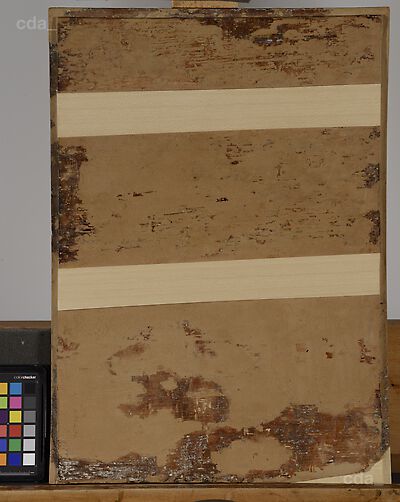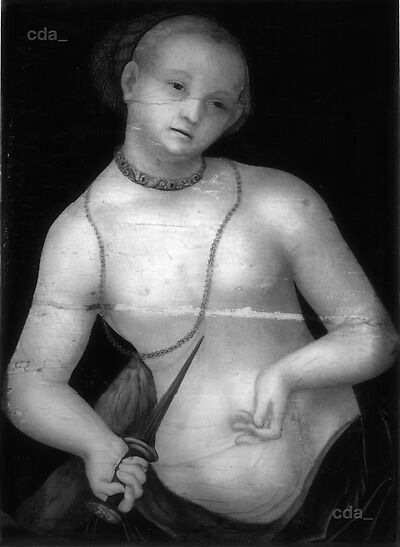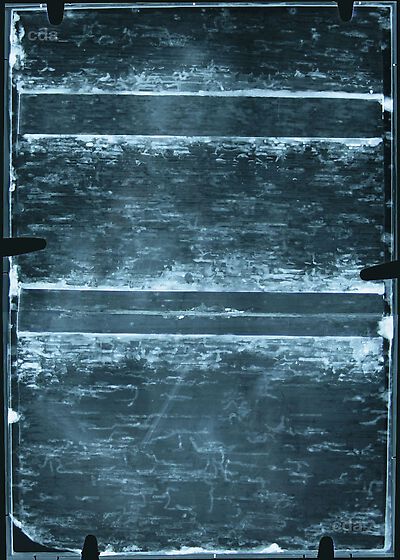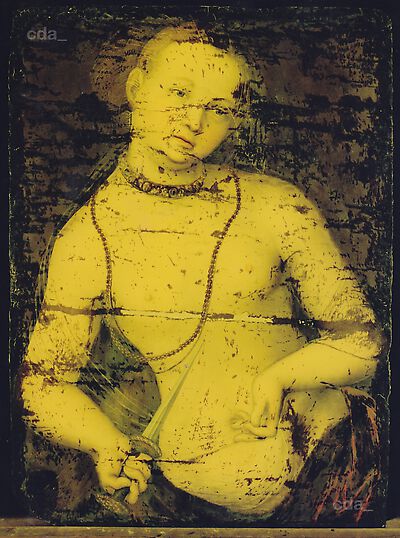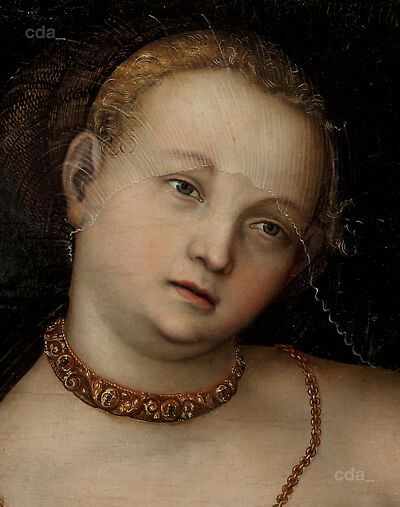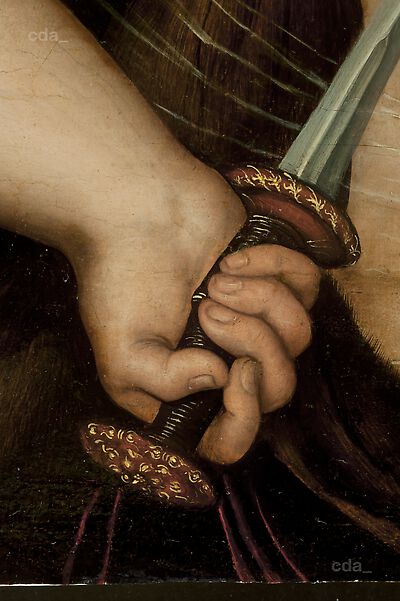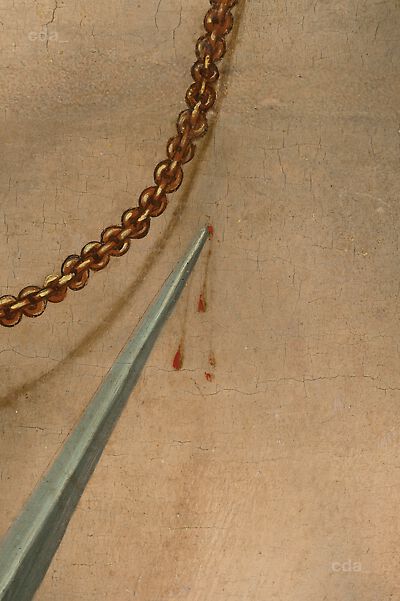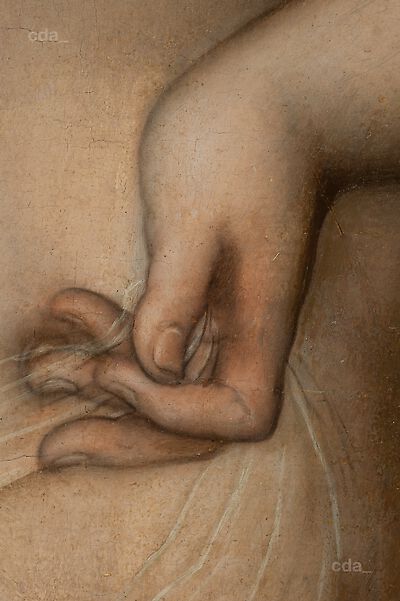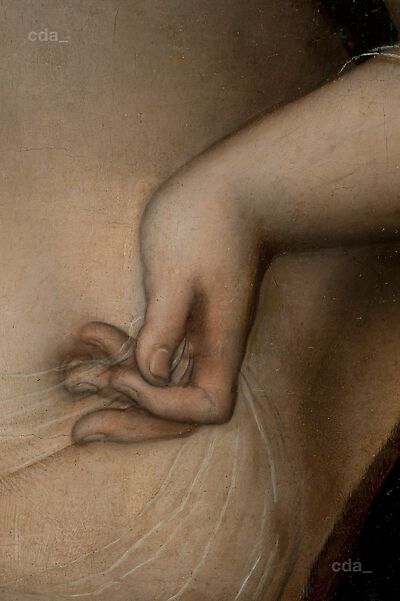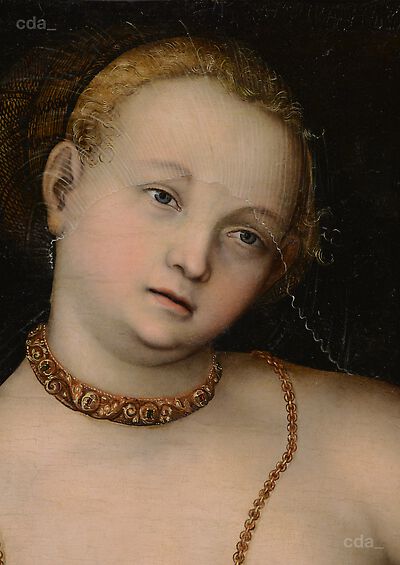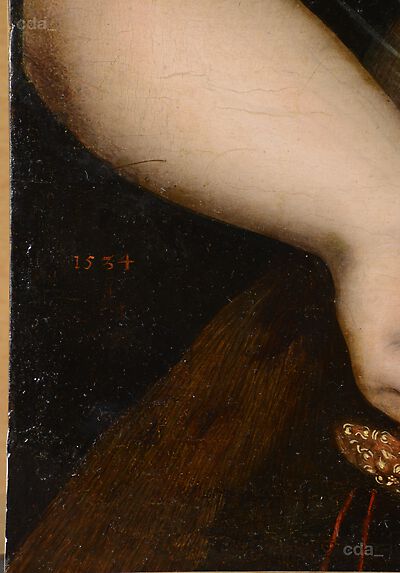- Attribution
- Lucas Cranach the Elder
Attribution
| Lucas Cranach the Elder | [Exhib. Cat. Düsseldorf 2017, no. 174] [Herrschaft, Heydenreich 2014][Koepplin, Exhib. Cat. Basel 1974, 666, No. 583] |
- Production dates
- 1534
about 1531
Production dates
| 1534 | [dated] |
| about 1531 | [Koepplin, Exhib. Cat. Basel 1974, 666, No. 583] |
| about 1537 | [Zervos 1950, Fig. p. 63] |
- Dimensions
- Dimensions of support: 50.5 x 36.2 cm
Dimensions
Dimensions of support: 50.5 x 36.2 cm
[Exhib. Cat. Düsseldorf 2017, no. 174]
- Signature / Dating
Artist's insignia at the bottom left: serpent with elevated wings and dated '1534' in red paint
Signature / Dating
Artist's insignia at the bottom left: serpent with elevated wings and dated '1534' in red paint
- Owner
- Museo de Bellas Artes Bilbao
- Repository
- Museo de Bellas Artes Bilbao
- Location
- Bilbao
- CDA ID
- ES_MBAB_12-79
- FR (1978) Nr.
- FR-none
- Persistent Link
- https://lucascranach.org/en/ES_MBAB_12-79/
